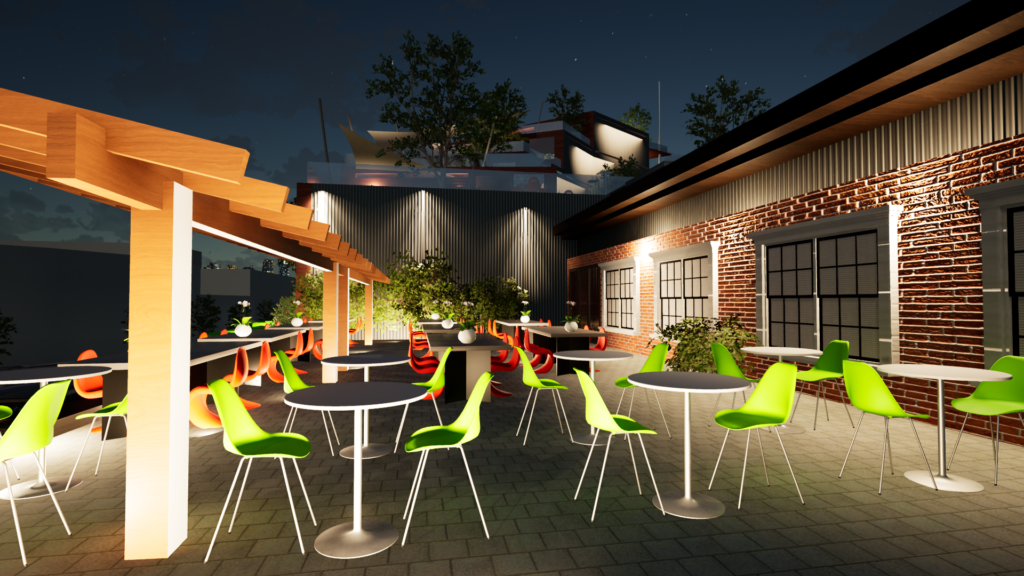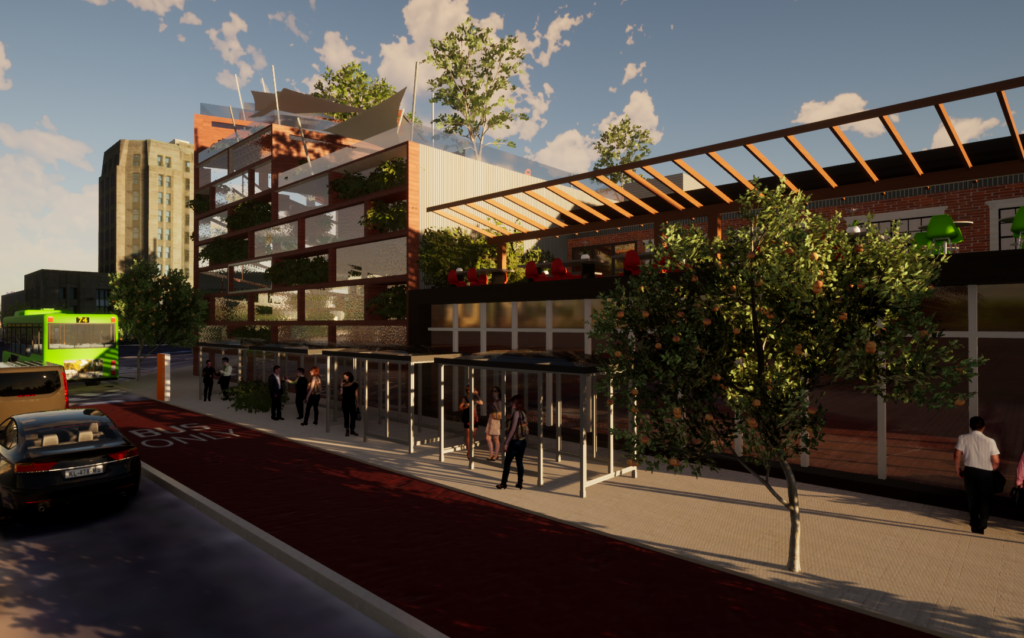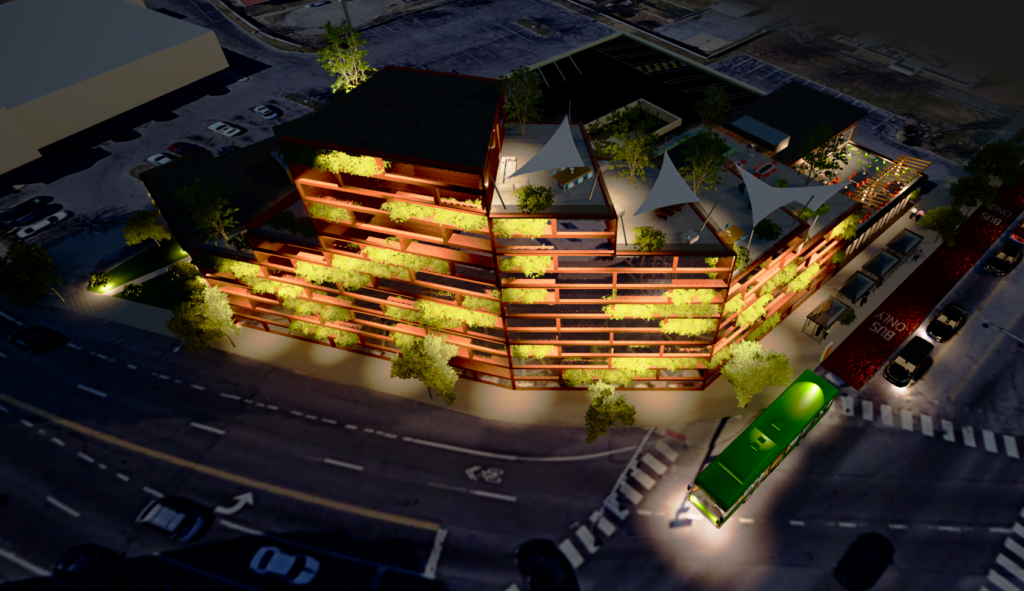
Returning to urbanity
Like many of the other major intersections in this city, the crossroads of Grand and Gravois has suffered the fate of auto-oriented blight. With two of the four corners still standing as a testament to our city’s rich history, the northern half has been leveled by the automobile, a gas station, and fast food restaurant holding our urbanity hostage. The commencement of the renovation of the White Castle on the northwest lot means more inertia for continued car-centricity. However, instead of allowing this national chain to extend its hold on this premier intersection, I propose an alternative that would both better St. Louis and restore the wounded built environment. This is what should be at Grand and Gravois.
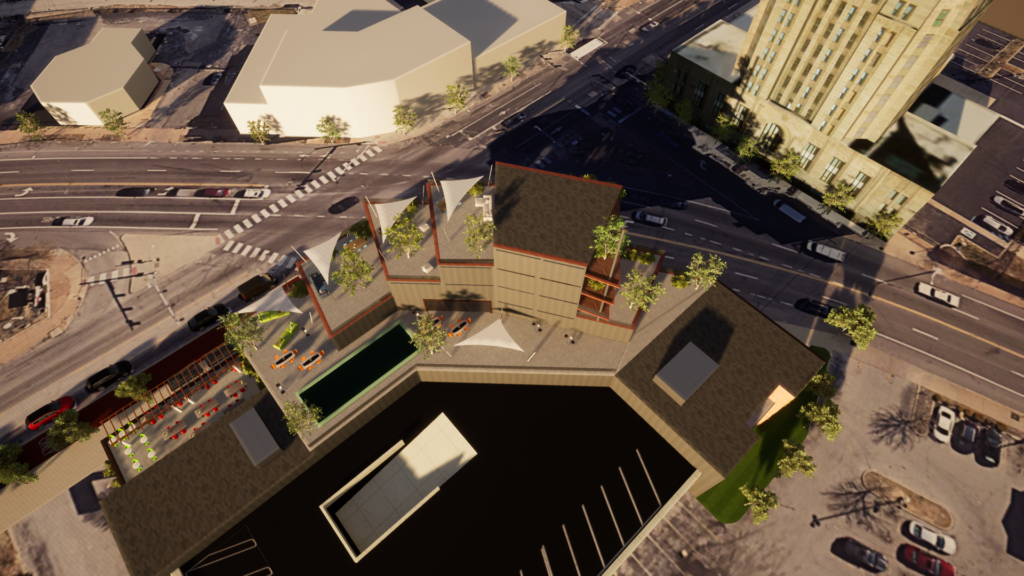
Bringing nature upwards
Like many of my designs, this proposal features a number of outdoor terraces and gathering spaces meant to bring activity to all parts of the building while raising the pedestrian eye up. These terraces, while a useful amenity, also work to bring nature to the inhabitants of the upper floors, who will reap the benefit of their shade and presence. The façade of the building additionally weaves in greenery through its numerous inset planters, which are nourished by their southern-facing position and a complex drainage system that brings rain from the terraces directly to the plants.
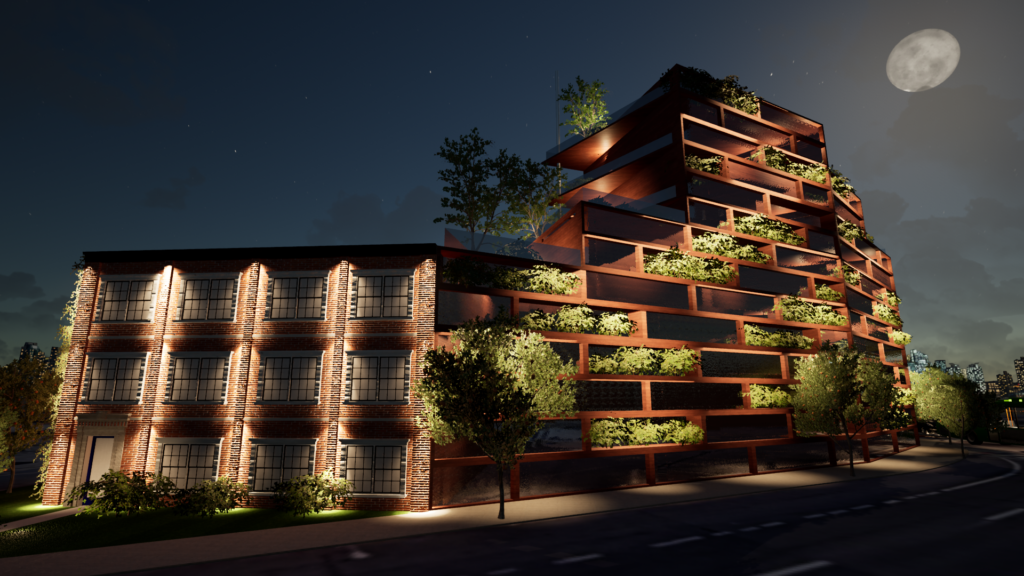
Multi-façade approach
On the topic of façades, this concept features three separate designs aiming to break up the monotony of a single continuous edifice. To the south along Gravois, a three-story classic brick building with walk-up access shifts to the more impressive seven-story Cross Laminated Timber build, which then steps down to conclude in a two-story restaurant portion that features both brick and lumber in its design.
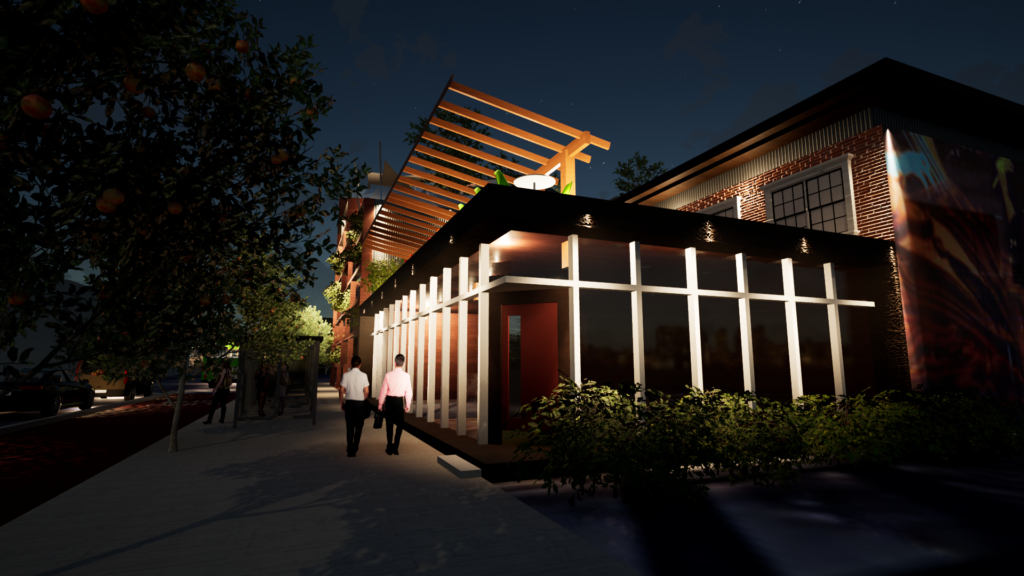
The future of infill
Cross Laminated Timber, or CLT, is a material that has boundless potential in the future of construction as its use is cheaper, quicker, and more environmentally friendly than other forms of construction such as cast concrete or steel. Additionally, its ability to be crafted locally promises to bring more jobs to our region while reducing our carbon footprint. CLT as a building material will notably be used in the new development on Vandaventer that is part of City Foundry‘s multimillion-dollar investment in the Midtown neighborhood. If widely adopted, CLT could change infill in this city going forward.
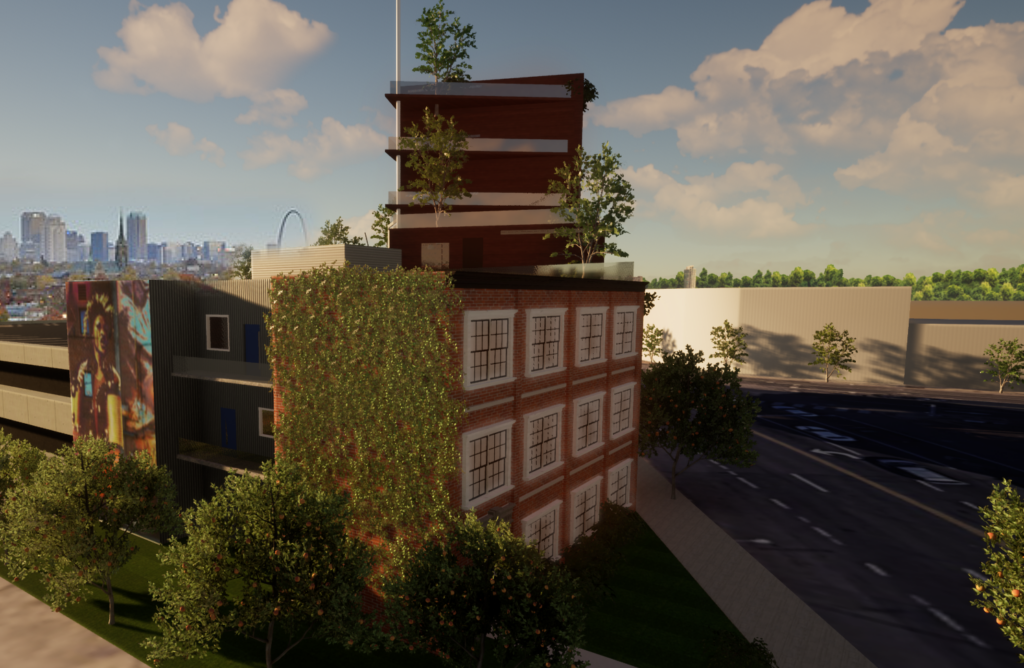
By the numbers
In total, this project would bring 110 condominium units to the intersection with the potential of adding more in future phases, extending on either side of the building to other auto-oriented parcels nearby. Some of the features shown in the renderings are an amenity pool area, a three-story attached parking garage, and the potential to be a hub for future transit options such as Bus Rapid Transit.
